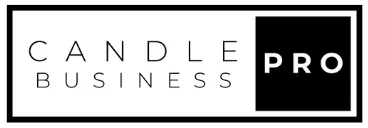Mastering Your Candle Pricing Strategy for Success
Apr 11, 2025Pricing your candles the right way is pivotal for growth in your candle business. A well-thought-out pricing strategy not only ensures profitability but also positions your brand effectively in a competitive market. Let’s dive into how to set your candle prices strategically and maximize your business potential.
Understanding Your Target Customers
First and foremost, you need to define your target customers. Different customer segments have varied expectations when it comes to pricing. Luxury shoppers are willing to pay premium prices for high-end candles, while mid-range buyers expect quality without overspending. Budget-conscious shoppers, on the other hand, are always on the lookout for deals and affordability.
Your pricing should align with what your target customers expect. This means providing the value they want at a price point they find acceptable. Understanding this dynamic is crucial for setting the right prices.
Researching Your Competitors
Next up, research your competitors. Look at the candle brands within your niche—be it artisanal, luxury, eco-friendly, or minimalist. Study their pricing strategies and analyze the value they offer. What do similar brands charge for candles like yours? Are they using premium wax, custom packaging, or unique branding? What are their candle sizes and burn times?
Understanding the perceived value of their products can help you position your candles effectively. Your goal should be to match or exceed their value while maintaining your necessary profit margins. This is essential for establishing a competitive edge in the market.
Calculating Your Costs for Profitability
Moving on to the next step: calculating your costs. List all expenses associated with making your candles—this includes wax, fragrance oils, wicks, vessels, labels, and lids. Don't forget to factor in shipping costs for these supplies as well.
Using tools like Inventora can simplify this process. This software allows you to track your costs and adjust them based on fluctuating supply prices. It’s essential to ensure that your pricing covers all costs while also allowing room for reinvestment into your business. Breaking even isn't enough; you need to build a margin that supports growth.
Why Traditional Pricing Methods Fall Short
The traditional 3X or 4X pricing method often falls short, especially for candle businesses looking to scale. These methods don’t leave room for marketing, discounts, or wholesale pricing, which are crucial for growth. For instance, if you offer promotions like "buy three, get one free," you need to ensure your pricing structure can support that.
In our shop, we allocate about 20% of our profit margin back into marketing. This allows us to hire staff for wholesale outreach and invest in advertising. If you’re pricing your candles too low, you won’t have the budget for these essential growth strategies.
Setting Your Retail Pricing Strategy
When it comes to retail pricing, aim for a markup of 5X to 6X your production cost. For example, if a candle costs you $6 to produce, your retail price should ideally be around $30. Pricing too low can lead to a lack of room for discounts or marketing, and customers may perceive your candles as less valuable.
Mastering Wholesale Course
Learn our proven strategies to get your candles on store shelves and build lasting retail partnerships, all without relying on Faire or other marketplaces.
Let's Get Your Candles In Stores!Take our candle, which we sell for $26 and costs us around $5 to produce. This gives us a solid margin that allows for promotions and discounts during key sales periods like Black Friday or the holiday season. Competitive pricing is essential to attract additional sales.
Wholesale Pricing Strategies
Now, let’s discuss wholesale pricing. Retailers typically expect to pay 50% of your retail price. So, if your candle retails for $30, a wholesaler would expect to pay $15. It’s crucial that your costs allow for this wholesale pricing structure.
If your candle costs $6 to make, selling it wholesale for $15 is still profitable. However, if your production cost is $10, that leaves very little room for profit and makes it challenging to sustain your wholesale strategy.
Adjusting Pricing for Long-Term Growth
As you set your prices, think long-term. Your pricing should not just cover costs; it should also account for marketing, advertising, discounts, and promotions. This includes holiday sales, bundles, and the costs associated with retail and wholesale partnerships.
Premium pricing can provide you with the necessary room to scale your business effectively. It’s about finding that sweet spot where your prices reflect both your costs and the perceived value your customers are willing to pay.
Recap and Final Thoughts
To recap, understanding your target audience and researching competitors are foundational steps in pricing your candles effectively. Calculate all your costs meticulously and ensure your pricing structure supports your business growth.
If you're currently pricing your candles at 3X or 4X, consider reevaluating your pricing strategy. The goal is to create a sustainable business model that allows for reinvestment and scaling over time. Adjust your prices as needed and view this as an ongoing process. With the right strategy, you can ensure your candle business not only survives but thrives.
We’d love to hear your feedback! What are your biggest pricing struggles? Drop a comment below, and let’s figure it out together. Join our Candle Business community for ongoing support and insights!



